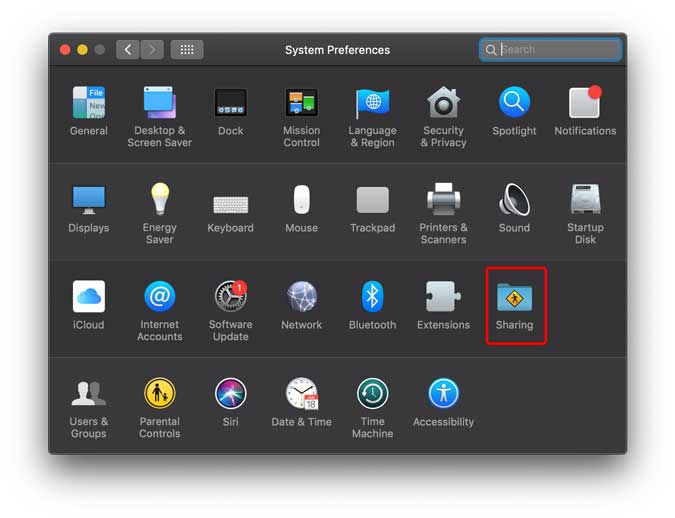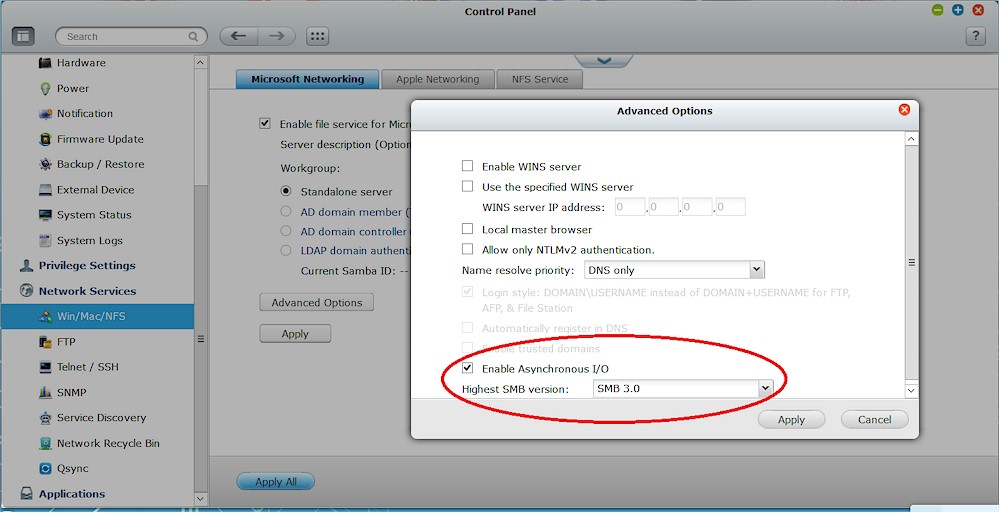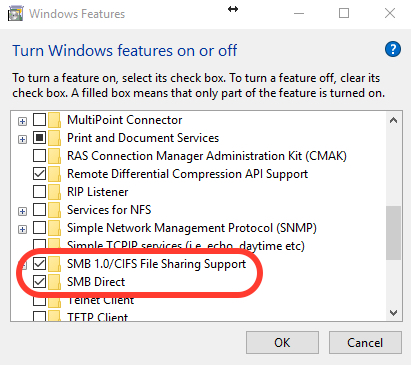- Afp Or Smb For Mac Catalina
- Afp Or Smb For Mac Download
- Afp Or Smb For Mac Operating System
- Afp Vs Smb Mac
It seems that Apple still has not fixed their 'quick and dirty' fix for Badlock as described in this thread: El Capitan 10.11.5 update SMB slow (bug)
If you believe that your network is secure from man-in-the-middle attacks and the Badlock bug, then you can disable client signing.
- Create a nsmb.conf file in /etc with vim. sudo will be required.
- Write into the file:
[default]
signing_required=no

Then restart your machine. Your SMB3 speeds should be comparable to AFP again.
Here's the earlier post: Re: Re: Re: Re: El Capitan 10.11.5 update SMB slow (bug)
Sep 20, 2016 11:51 AM
On your Mac, choose Apple menu System Preferences, then click Sharing. Open Sharing preferences for me. Make sure File Sharing is selected, then click Options. Select 'Share files and folders using SMB' or 'Share files and folders using AFP.' You can select both. AFP is clearly superior to SMB or NFS for Mac OS 8.1-OS X 10.8 clients. AFP is the native file and printer sharing protocol for Macs and it supports many unique Mac attributes that are not supported by other protocols. So for the best performance, and 100% compatibility, AFP should be used. I have seen forum posts out in the wild that suggest that AFP is 'dead'. I have seen this question and this post that states SMB is now the 'default' protocol for Apple sharing. I am using FreeNAS and it allows you to select either AFP or SMB shares. I mostly use Mac clients, so it would seem that AFP would be the obvious choice, but if AFP is going away in future versions of macOS, then I.
The most common way to share data with Windows and Mac includes Slack, Google Drive and good old' flash drives. However, there is a better way if both computers are connected to the same WiFi network. In this article, we'll set up shared folders on Mac and access it from a Windows computer. Let's begin.
If you want to share the folders on Windows and access it from a Mac instead then you can follow the steps in this article on how to access Windows Shared folders on a Mac.
Step 1. Enable File Sharing and Share a Folder on Mac
Setting up and Accessing Shared folders is relatively easy and you don't need to install any additional hardware. However, it would be even more seamless if you assign these devices a static IP so that you don't have to re-establish a connection whenever your router assigns a new one.
Open ‘System Preferences‘ on your Mac computer and click the Sharing icon.
Also Read: How to Check Battery Health on MacBook
Click File Sharing and add all the folders you want to share by clicking the + button under Shared Folders as shown below.
Must Read: 10 Best Mac Keyboard Shortcuts You Must Know
After this, you can add users and the level of control they'd have on the shared folders. If you're unsure then leave it on the default and enable the Server. Click Options to open the dialog box.
Mac supports both SMB and AFP servers where the latter is built for Apple devices only. I plan on sharing the folder between both Mac and Windows so I checked both servers but you can enable just SMB and it would work just as fine.

Check the box next to 'Share files and folders using SMB'. Check the box next to your account and click Done.
Now, click the ‘File Sharing' box on the left pane and then lock the settings by clicking on the padlock icon in the bottom left side of the window.

Then restart your machine. Your SMB3 speeds should be comparable to AFP again.
Here's the earlier post: Re: Re: Re: Re: El Capitan 10.11.5 update SMB slow (bug)
Sep 20, 2016 11:51 AM
On your Mac, choose Apple menu System Preferences, then click Sharing. Open Sharing preferences for me. Make sure File Sharing is selected, then click Options. Select 'Share files and folders using SMB' or 'Share files and folders using AFP.' You can select both. AFP is clearly superior to SMB or NFS for Mac OS 8.1-OS X 10.8 clients. AFP is the native file and printer sharing protocol for Macs and it supports many unique Mac attributes that are not supported by other protocols. So for the best performance, and 100% compatibility, AFP should be used. I have seen forum posts out in the wild that suggest that AFP is 'dead'. I have seen this question and this post that states SMB is now the 'default' protocol for Apple sharing. I am using FreeNAS and it allows you to select either AFP or SMB shares. I mostly use Mac clients, so it would seem that AFP would be the obvious choice, but if AFP is going away in future versions of macOS, then I.
The most common way to share data with Windows and Mac includes Slack, Google Drive and good old' flash drives. However, there is a better way if both computers are connected to the same WiFi network. In this article, we'll set up shared folders on Mac and access it from a Windows computer. Let's begin.
If you want to share the folders on Windows and access it from a Mac instead then you can follow the steps in this article on how to access Windows Shared folders on a Mac.
Step 1. Enable File Sharing and Share a Folder on Mac
Setting up and Accessing Shared folders is relatively easy and you don't need to install any additional hardware. However, it would be even more seamless if you assign these devices a static IP so that you don't have to re-establish a connection whenever your router assigns a new one.
Open ‘System Preferences‘ on your Mac computer and click the Sharing icon.
Also Read: How to Check Battery Health on MacBook
Click File Sharing and add all the folders you want to share by clicking the + button under Shared Folders as shown below.
Must Read: 10 Best Mac Keyboard Shortcuts You Must Know
After this, you can add users and the level of control they'd have on the shared folders. If you're unsure then leave it on the default and enable the Server. Click Options to open the dialog box.
Mac supports both SMB and AFP servers where the latter is built for Apple devices only. I plan on sharing the folder between both Mac and Windows so I checked both servers but you can enable just SMB and it would work just as fine.
Check the box next to 'Share files and folders using SMB'. Check the box next to your account and click Done.
Now, click the ‘File Sharing' box on the left pane and then lock the settings by clicking on the padlock icon in the bottom left side of the window.
Before you exit this window, note down the smb server address and the name of the shared folder, we'll need this to access the shared folder on Mac.
Read: How to Setup Shared Folders, Users, Permissions on WD NAS
Step 2. Access Shared folder On Windows
To access the shared folder on a Windows computer, we'll map the drive to the computer. Open Windows Explorer and right-click on This PC icon.
Select ‘Map Network Drive'. Even though you can access the shared folder by running this command 'IP-ADDRESS-OF-MAC' in the Run dialog box, we'll map it so that it shows up in Windows Explorer and you don't have to run the command every time you want to access the network drive.
Afp Or Smb For Mac Catalina
Now, you'd need the IP address we note down earlier while enabling the shared folder on Mac. Type ' YOUR-MAC-IPSHARED-FOLDER'. Click finish.
Afp Or Smb For Mac Download
It would prompt you to enter the credentials and map the drive after successful authentication. Now, you can access the shared folder and files in it.
Afp Or Smb For Mac Operating System
Final Words
Afp Vs Smb Mac
That was a quick way to set up sharing and accessing Mac shared folders from a Windows computer. It is a convenient and reliable way of accessing large files over the network when you don't move around a lot. We use it for sharing Rendered video files that reduce the dependency on Google Drive and flash drives. Go ahead map the drives and let me know if you face any problems. You can comment down below or reach me on Twitter.
